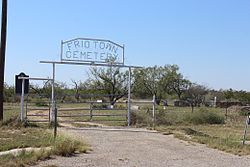
Real County is a county located on the Edwards Plateau in the U.S. state of Texas. As of the 2010 census, its population was 3,309. The county seat is Leakey. The county is named for Julius Real (1860–1944), a former member of the Texas State Senate.

Menard County is a county located on the Edwards Plateau in the U.S. state of Texas. As of the 2010 census, its population was 2,242. Its seat is Menard. The county was created in 1858 and later organized in 1871. It is named for Michel Branamour Menard, the founder of Galveston, Texas.

Frio County is a county located in the U.S. state of Texas. As of the 2010 census, its population was 17,217. The county seat is Pearsall. The county was created in 1858 and later organized in 1871. Frio is named for the Frio River, whose name is Spanish for "cold".

San Elizario is a city in El Paso County, Texas, United States. The population was 13,603 at the 2010 census. It is part of the El Paso Metropolitan Statistical Area. It lies on the Rio Grande, which forms the border between the United States and Mexico. The city of Socorro adjoins it on the west and the town of Clint lies to the north.

Dilley is a city in Frio County, Texas, United States. The population was 3,894 at the 2010 census. It is located off Interstate 35 south of the county seat in Pearsall.
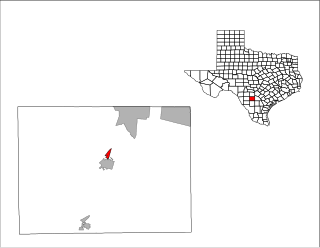
North Pearsall is a census-designated place (CDP) in Frio County, Texas, United States. The population was 614 at the 2010 census.

Pearsall is a city in and the county seat of Frio County, Texas, United States. The population was 9,146 at the 2010 census, up from 7,157 at the 2000 census.

Mason is a city in, and the county seat of, Mason County, Texas, United States. The city is an agricultural community on Comanche Creek southwest of Mason Mountain, on the Edwards Plateau and part of the Llano Uplift. The population was 2,114 at the 2010 census.
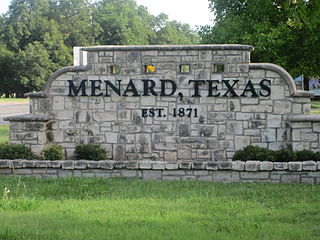
Menard is a city in and the county seat of Menard County, Texas, United States. Its population was 1,471 at the 2010 census.

Leakey is a city in and the county seat of Real County, Texas, United States. The population was 425 at the 2010 census.

John Wesley Hardin was an American Old West outlaw, gunfighter, and controversial folk icon. The son of a Methodist preacher, Hardin got into trouble with the law from an early age. He killed his first man at age 15; he claimed it was in self-defense.
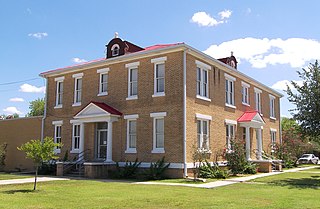
Tilden is a Census-designated place (CDP) and county seat of McMullen County, Texas, United States.
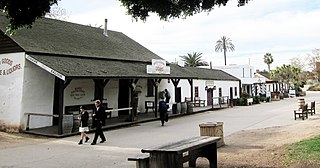
Old Town San Diego State Historic Park, located in the Old Town neighborhood of San Diego, California, is a state protected historical park in San Diego. It commemorates the early days of the City of San Diego and includes many historic buildings from the period 1820 to 1870. The park was established in 1968. In 2005 and 2006, California State Parks listed Old Town San Diego as the most visited state park in California.
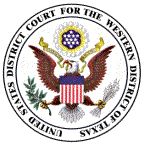
The United States District Court for the Western District of Texas is a federal district court. The court convenes in San Antonio with divisions in Austin, Del Rio, El Paso, Midland, Pecos, and Waco. It has jurisdiction in over 50 Trans-Pecos, Permian Basin, and Hill Country counties of the U.S. state of Texas. This district covers over 92,000 square miles (240,000 km2) and seven divisions.
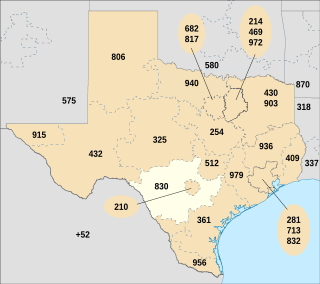
Area code 830 is the telephone area code in the North American Numbering Plan (NANP) for the Texas Hill Country and most of San Antonio's suburbs. It completely surrounds area codes 210 and 726, which serve most of San Antonio itself along with its innermost suburbs.

Samuel Sloan was a Philadelphia-based architect and best-selling author of architecture books in the mid-19th century. He specialized in Italianate villas and country houses, churches, and institutional buildings. His most famous building—the octagonal mansion "Longwood" in Natchez, Mississippi—is unfinished; construction was abandoned during the American Civil War.
The San Antonio–El Paso Road, also known as the Lower Emigrant Road or Military Road, was an economically important trade route between the Texas cities of San Antonio and El Paso between 1849 and 1882. Mail, freight, and passengers traveled by horse and wagon along this road across the Edwards Plateau and dangerous Trans-Pecos region of West Texas.
Wyatt Outlaw was the first African-American elected to be Town Commissioner and Constable of the town of Graham, North Carolina. He was lynched by the Ku Klux Klan on February 26, 1870. His death, along with the assassination of white Republican State Senator John W. Stephens at the Caswell County Courthouse, provoked Governor William Woods Holden to declare martial law in Alamance and Caswell Counties, resulting in the Kirk-Holden War of 1870.

The Jeff Davis County Courthouse is located in the town of Fort Davis, the seat of Jeff Davis County in the U.S. state of Texas. The courthouse was constructed between 1910-1911 and added to the National Register of Historic Places in 2002. The Texas Historical Commission (THC) has also designated the building as a Recorded Texas Historic Landmark since 2000 and, along with the surrounding courthouse square, as a State Antiquities Landmark since 2003. The surrounding county and county seat, along with the nearby historic frontier fort at Fort Davis National Historic Site, are named after Jefferson Davis, who served as U.S. war secretary at the time of the establishment of the fort and the town, and who would later become president of the Confederate States of America during the Civil War.
Spur 581 is a state highway spur located in Frio County.
